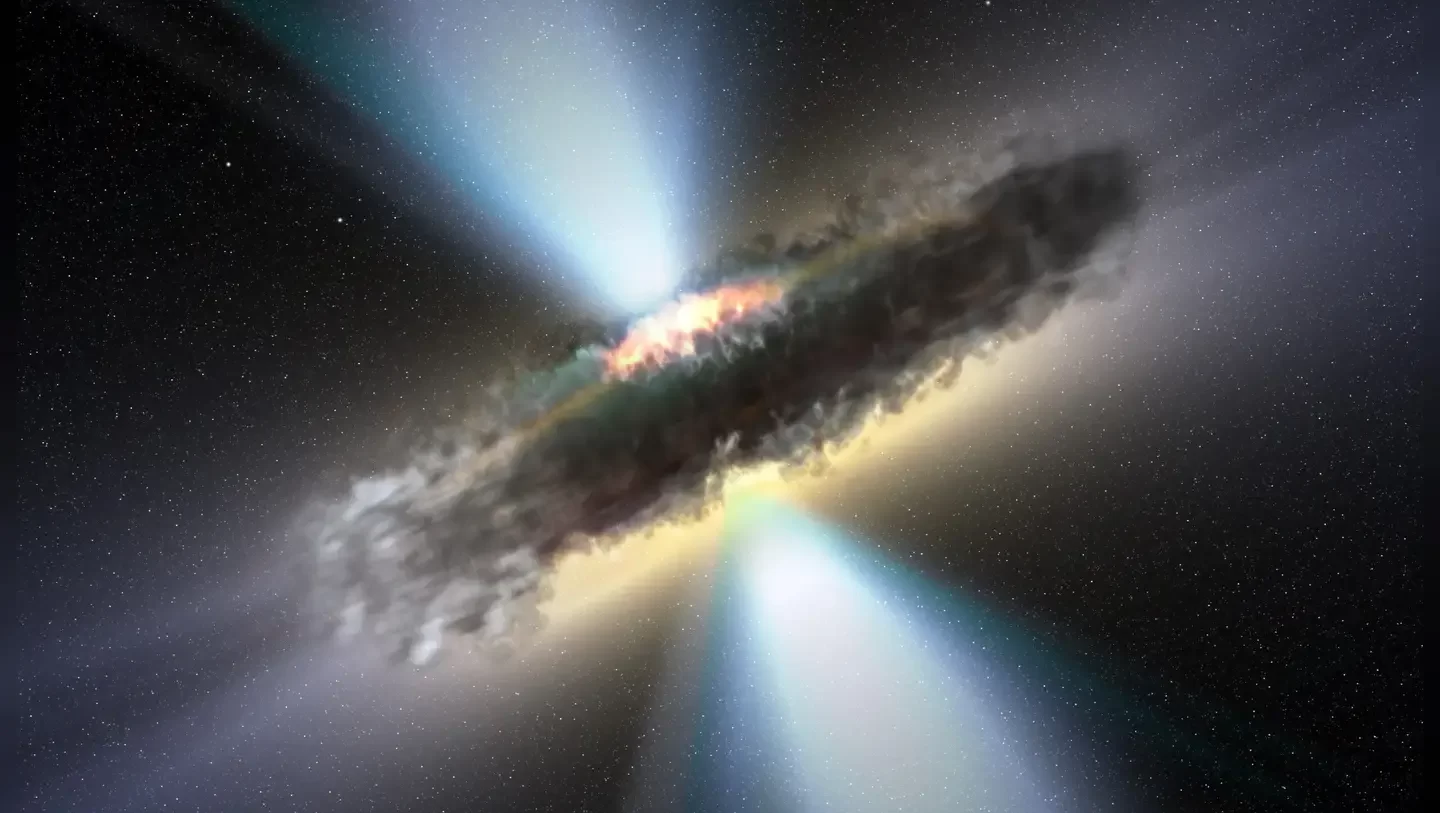Astonishing: Massive Water Cloud Encircles Distant Quasar, 140 Trillion Times Earth’s Ocean Water Amount
TL;DR
Two teams of astronomers have discovered the largest and most distant water reservoir in the universe, located 12 billion light-years away around a quasar named APM 08279+5255. This quasar, fueled by a black hole 20 billion times more massive than the Sun, contains water vapor 140 trillion times that of Earth’s oceans. The water’s presence reveals unique conditions, with the gas around the black hole exposed to intense X-rays and infrared radiation, making it warmer and denser than typical galactic conditions. Observations suggest this quasar has enough gas to fuel the black hole’s growth sixfold, highlighting water’s pervasiveness throughout the universe. Dive into this article to explore the universe’s largest water reservoir and its cosmic implications!
________________________
Two teams of astronomers have identified the largest and most distant water reservoir ever found in the universe. This water, which amounts to 140 trillion times the water in Earth’s oceans, encircles a massive, feeding black hole known as a quasar, located over 12 billion light-years away.
“The environment around this quasar is unique in that it’s producing this huge mass of water,” said Matt Bradford from NASA’s Jet Propulsion Laboratory in Pasadena, California. “It’s another demonstration that water is pervasive throughout the universe, even at the very earliest times.”
A quasar is fueled by a gigantic black hole that steadily absorbs a surrounding disk of gas and dust. As it feeds, the quasar releases vast amounts of energy. Both teams of astronomers examined a specific quasar called APM 08279+5255, which contains a black hole 20 billion times more massive than the Sun and emits energy equivalent to a thousand trillion Suns.

While astronomers anticipated the presence of water vapor even in the early, far-off universe, they had never detected it at such a great distance before. Although water vapor exists in the Milky Way, its total quantity is 4,000 times less than that in the quasar because most of the Milky Way’s water is frozen in ice.
Water vapor serves as a significant trace gas that provides insight into the nature of the quasar. In this quasar, the water vapor extends around the black hole within a gaseous region that spans hundreds of light-years. Its presence indicates that the quasar is exposing the gas to X-rays and infrared radiation, making the gas unusually warm and dense by astronomical standards. Despite the gas being at a frigid –63° Fahrenheit (–53° Celsius) and 300 trillion times less dense than Earth’s atmosphere, it is still five times hotter and 10 to 100 times denser than what’s typical in galaxies like the Milky Way.
Measurements of the water vapor and other molecules, like carbon monoxide, suggest there is sufficient gas to continue feeding the black hole until it grows to about six times its current size. However, astronomers note that it is unclear whether this will occur, as some of the gas could condense into stars or be ejected from the quasar.
Bradford’s team began their observations in 2008 using an instrument called “Z-Spec” at the California Institute of Technology’s Submillimeter Observatory, a 33-foot (10 meters) telescope near the summit of Mauna Kea in Hawaii. Additional observations were conducted with the Combined Array for Research in Millimeter-Wave Astronomy (CARMA), an array of radio dishes in the Inyo Mountains of Southern California.
The second team, led by Dariusz Lis from Caltech, used the Plateau de Bure Interferometer in the French Alps to detect water. In 2010, Lis’ team fortuitously found water in APM 8279+5255 by observing one spectral signature. Bradford’s team was able to gather more detailed information about the water, including its immense mass, because they detected several spectral signatures of the water.





I wanna drink the event horizon water
It’s spread out so sparsely that it would be nearly indistinguishable from ordinary empty space were you in the middle of the “cloud”. Space is just stupidly big.
How can we know about objects and areas 12 billion light years away? Wouldn’t it take their images 12 billion years to reach us, going at the speed of light? And nothing moves faster than the speed of light, correct?
Every time I see something like this I wonder how much of a teraforming tool it could be. Enough water for 140 trillion worlds? All clean water too? Let’s take that water and put it over here on mars. Then, take that oxygen gas from that nebula, and put it there too. Now we need some seeds, and a couple good bacteria strains.
Only problem is how much we suck at getting places. Boo human travel speeds, boo.
Nothing to be alarmed about. It was barely even a real thing.
Ah, science journalism at its finest. Computer simulation does not destroy fabric of universe.